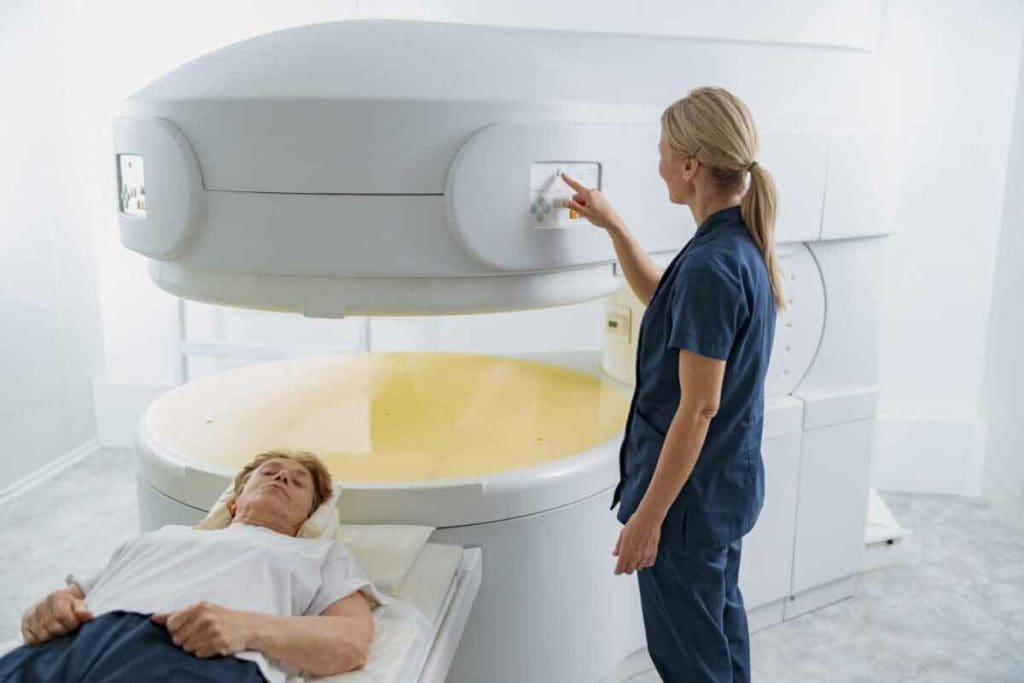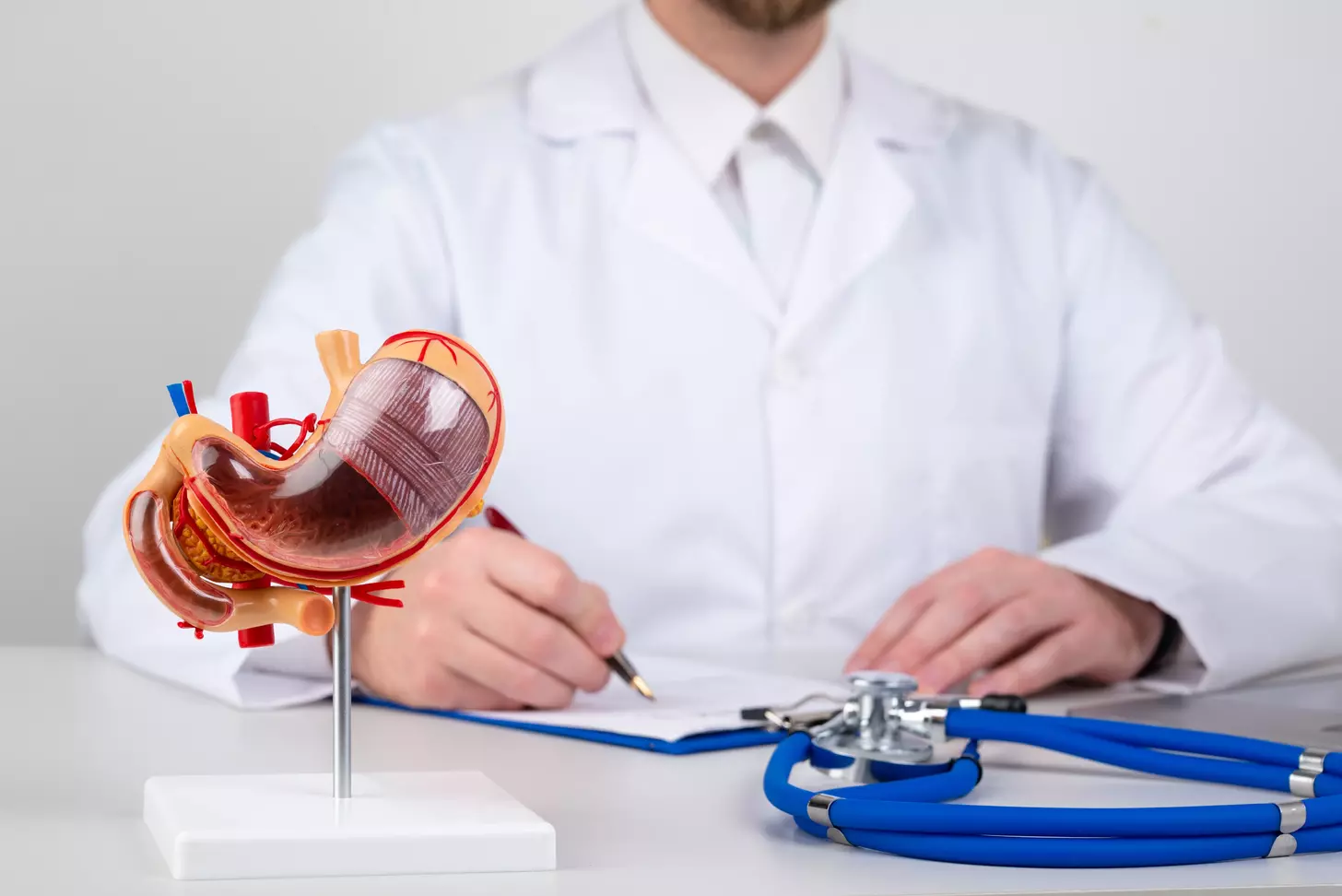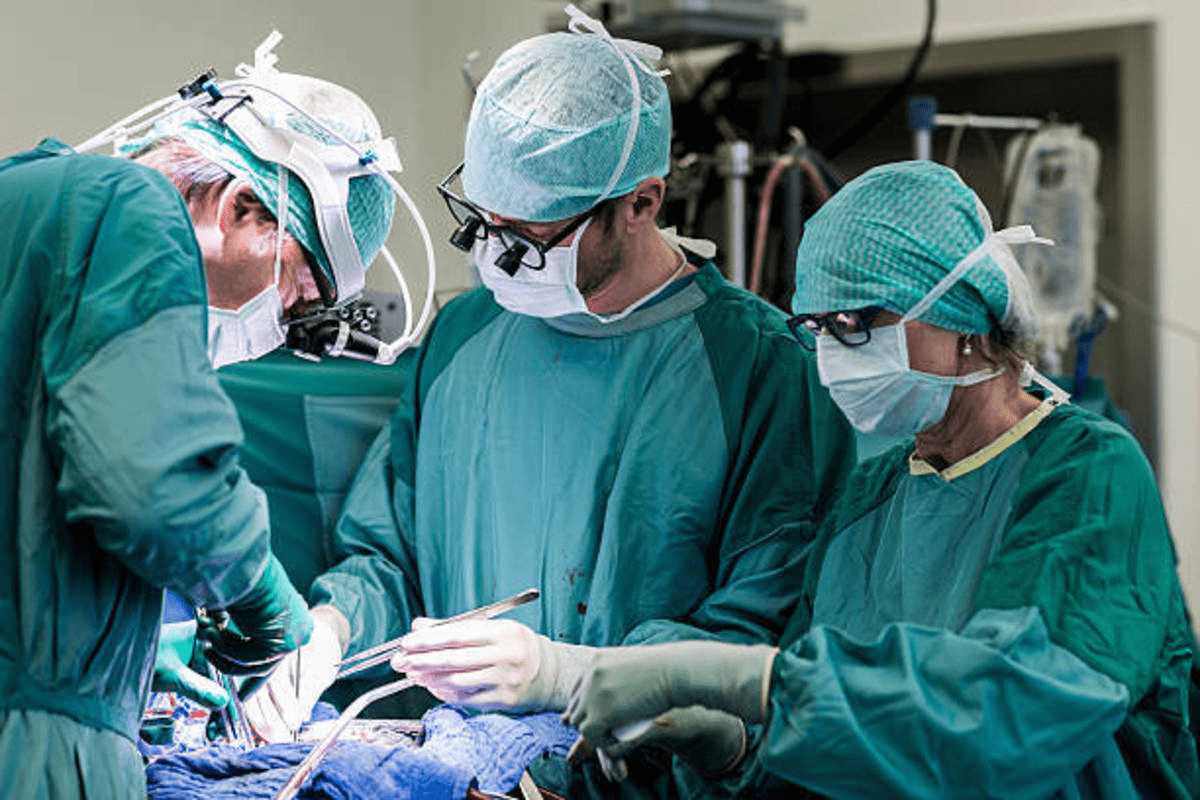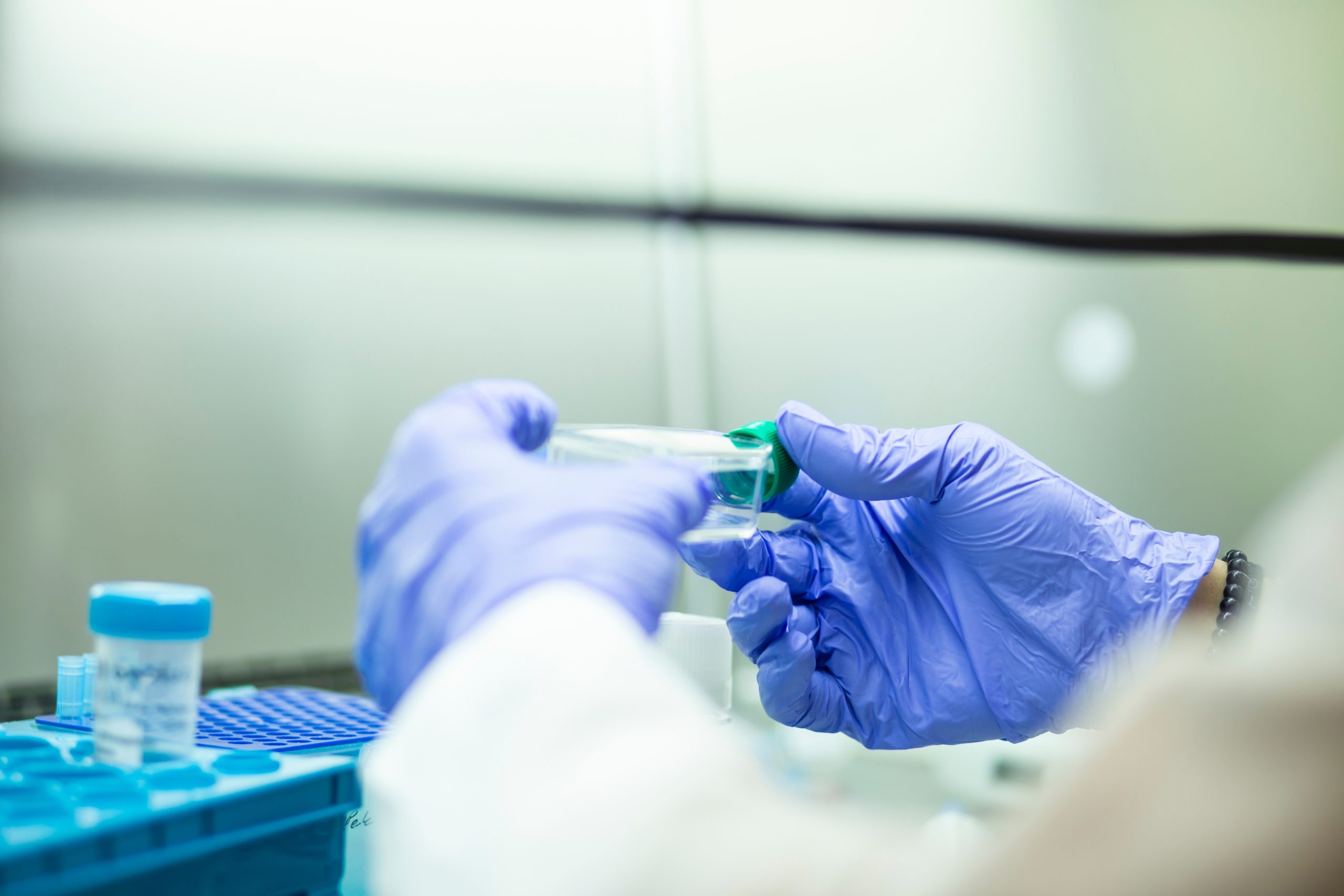Last Updated on November 27, 2025 by Bilal Hasdemir

What Are the 4 Different Types of Scans? Understanding Medical Imaging
Medical experts use various types of scans to detect health issues, track disease progression, plan surgeries, and monitor pregnancies. At Liv Hospital, we combine international expertise with advanced technology to deliver accurate and compassionate care.
If you’ve ever wondered what are the 4 different types of scans, they include X-ray, CT scan, MRI, and Ultrasound. Each serves a unique purpose in modern healthcare:
- X-ray helps visualize bones and detect fractures.
- CT scan provides detailed 3D images of internal organs.
- MRI captures clear images of soft tissues, brain, and spine.
- Ultrasound uses sound waves to monitor organs and pregnancies safely.
Understanding these different scan types helps patients make informed choices about their health and treatment. At Liv Hospital, our goal is to ensure every patient receives precise diagnosis and world-class care.
Key Takeaways
- Four main types of medical scans are used in diagnosis and treatment.
- X-ray, CT, MRI, and Ultrasound each have distinct clinical purposes.
- Medical scans help diagnose health conditions and track disease progression.
- Liv Hospital provides international expertise and quality care in medical imaging.
- Understanding different types of medical scans is essential for effective healthcare.
Understanding Medical Imaging Technology
Understanding Medical Imaging and Its Applications
Medical imaging is key in today’s healthcare. It helps doctors diagnose and treat many health issues. This part talks about the different imaging methods, their uses, and how they help patients.
### Types of Medical Imaging
1. X-ray Technology: Uses X-rays to show inside the body, often for bone and lung checks.
2. Computed Tomography (CT): Makes detailed images by combining X-rays, great for complex cases.
3. Magnetic Resonance Imaging (MRI): Creates detailed pictures without harmful radiation, perfect for soft tissues.
4. Ultrasound Imaging: Uses sound waves to see inside organs and tissues.
### Applications in Healthcare
Medical imaging is vital for diagnosing, planning treatments, and tracking disease. It gives doctors clear images of the body’s inside parts. This helps them make better choices.
### Benefits of Medical Imaging
Medical imaging helps find diseases early, leading to quicker and better treatments. It also helps track how diseases progress and if treatments work.
In summary, medical imaging is a big part of healthcare. It offers many technologies that improve diagnosis, treatment, and care. Knowing about these methods and their uses is key for doctors to give the best care.
What Are the 4 Different Types of Scans Used in Modern Medicine?

Modern medicine uses four main types of scans to diagnose and treat many health issues. These scans are key tools for doctors. They help doctors see inside the body in different ways.
The Fundamental Categories of Medical Imaging
The four main scans are X-ray, Computed Tomography (CT), Magnetic Resonance Imaging (MRI), and Ultrasound. Each uses different methods to show what’s inside the body.
X-ray and CT scans use radiation to create images. CT scans show more detailed views. MRI uses a strong magnetic field and radio waves to show detailed images without radiation. This makes it great for soft tissues.
Ultrasound uses sound waves to make real-time images. It’s good for watching pregnancies, guiding biopsies, and checking some organs.
How Doctors Choose the Right Scan Type
Choosing the right scan depends on the patient’s symptoms, medical history, and the condition being checked. For example, X-ray is often used first for bone fractures. MRI is better for soft tissues, like joint injuries or some brain conditions.
Doctors also think about each scan’s benefits and drawbacks. CT scans give detailed images fast, but have more radiation than X-rays. Ultrasound is safe and doesn’t use radiation, but it might not show all the details needed for some conditions.
In the end, doctors pick the scan based on what’s best for the patient. They choose the technology that will give the most accurate diagnosis, safely and comfortably.
X-Ray Scans: The Original Medical Imaging Technology
X-rays are a type of electromagnetic radiation used in medical imaging. Wilhelm Conrad Röntgen discovered them in 1895. They have changed medicine a lot.
X-rays are made in an X-ray tube. They help doctors see inside the body. This helps in diagnosing and treating diseases.
Over time, X-ray technology has improved a lot. It’s now a key part of modern medicine.
CT Scans: Advanced Cross-Sectional Imaging

Computed Tomography (CT) scans are key in today’s medicine. They give deep insights into our bodies. By taking X-ray images from many angles, CT scans make detailed pictures of our insides. Doctors use these pictures to find and track many health issues.
The Science Behind Computed Tomography
CT scans use a moving X-ray tube and detectors to capture images from different sides. These images are then put together into detailed pictures using computers. This lets doctors see inside our bodies clearly, helping them make accurate diagnoses and plans.
Clinical Applications for Trauma, Tumors, and Vascular Diseases
CT scans are very useful in many areas, like trauma, tumors, and blood vessel diseases. Here are some main uses:
- Trauma assessment: CT scans check for injuries, like bleeding inside or organ damage, in emergencies.
- Tumor detection and monitoring: They help find and watch tumors, letting doctors see if they’re getting bigger or changing.
- Vascular disease diagnosis: CT scans spot and track blood vessel problems, like aneurysms or blockages, so doctors can act fast.
Radiation Exposure and Risk Assessment
CT scans are very helpful, but they do involve radiation. It’s important to think about the good they do versus the risks, like for people who need many scans. Doctors try to use as little radiation as possible, like using the lowest dose needed.
Knowing how CT scans work, their uses, and how to reduce radiation helps us see their importance in today’s medicine.
MRI Scans: Detailed Soft Tissue Visualization
MRI scans are key in medical imaging, showing the body’s inside without harmful radiation. They use strong magnetic fields and radio waves to create clear images. This helps doctors find many health issues, like injuries and some cancers.
First, the patient gets into the MRI machine, a big cylinder. Inside, a strong magnetic field aligns hydrogen nuclei. Then, radio waves make these nuclei send signals. These signals help make detailed images of the body’s inside.
MRI scans are great for seeing soft tissues clearly. This is because they can show organs and tendons well. This is very helpful for checking the brain, spine, and joints.
Bu some people can’t have MRI scans. This includes those with metal implants or metal pieces in their body. Also, people with claustrophobia might find the MRI machine too tight.
Patients need to listen to their doctor and the MRI center. They might need to remove metal, follow a diet, or arrive early. This helps make the scan go smoothly.
In summary, MRI scans are very useful for seeing inside the body. Knowing how they work helps patients understand their health better. This way, they can get the right care for their health issues.
Ultrasound Scans: Sound Waves for Real-Time Imaging
Understanding the Importance of Ultrasound in Medical Imaging
Ultrasound technology has changed how we diagnose diseases. It’s non-invasive and very effective. It uses sound waves to show detailed images of organs. This helps doctors diagnose many conditions.
The Role of Ultrasound in Medical Diagnosis
Ultrasound is key in diagnosing diseases, like in obstetrics and abdominal imaging. It helps track fetal growth, spot gallstones, and find liver diseases.
Benefits of Ultrasound Technology
Ultrasound is safe because it doesn’t use harmful radiation. This makes it safer for patients, like pregnant women. It’s also cheaper than MRI or CT scans.
Limitations and Future Directions
Even though ultrasound has improved, it’s not perfect. Image quality depends on the operator and equipment. Future updates aim to make images clearer and more accurate.
In conclusion, ultrasound is a vital tool in medical imaging. It’s safe and effective for seeing inside the body. Its use in obstetrics and other areas makes it essential in healthcare today.
Comparing the Different Types of Body Scans
Understanding the types of scans is key to good health care. Each medical condition needs a specific scan for the best results. The right scan can make a big difference in treatment.
Radiation-Based vs. Non-Radiation-Based Technologies
Scans can be split into two groups: those that use radiation and those that don’t. X-rays and CT scans use radiation to see inside the body. But they can expose patients to radiation, which is a worry for those needing many scans.
Scans without radiation, like MRI and ultrasound, are safer. MRI uses magnetic fields and radio waves, while ultrasound uses sound waves. These are great for those who can’t handle radiation or need many scans.
Cost, Accessibility, and Time Considerations
The price and availability of scans vary a lot. X-rays are cheap and easy to find, but MRI and CT scans are pricier. The cost can go up if you need special agents for the scan.
Where you live also affects scan availability. Some scans might not be available in all places, like rural areas. The time it takes to do and read the scan results also varies. Some scans give quick results, while others take longer.
Which Scan Provides the Best Detail for Different Body Systems
Each body system needs a specific scan for the best view. MRI is great for soft tissues like the brain and joints. CT scans are better for bones and finding injuries.
Ultrasound is best for looking at the belly and during pregnancy. X-rays are good for bones and some chest problems. Knowing what each scan can do helps doctors choose the right one for each patient.
Healthcare professionals use this knowledge to pick the best scan for each patient. This ensures accurate diagnoses and effective treatments.
How Medical Professionals Interpret Scan Results
Interpreting medical scans is a complex task. It needs a deep understanding of human anatomy and medical imaging. Radiologists are key in this, using their skills to analyze images and give accurate diagnoses.
They know how to use different imaging tools like X-rays, CT scans, and MRI scans. This knowledge helps them make good decisions for patient care. It’s vital for diagnosing and treating many health issues, from injuries to chronic diseases and cancers.
By mixing technical and clinical knowledge, healthcare professionals can offer top-notch care. This approach improves patient outcomes.
Recent Innovations in Medical Scanning Technology
Medical imaging has seen big improvements in how well doctors can diagnose. Artificial intelligence (AI) is a big part of this. AI helps doctors spot problems and make diagnoses faster and more accurately.
AI in medical imaging brings many benefits. It makes diagnoses more accurate, saves time, and improves patient care. AI can look through lots of data and find patterns that humans might miss.
Also, MRI and CT scans have gotten better. These scans give doctors clear pictures of what’s inside the body. This helps them see more details than before.
Together, AI and better imaging can change medical imaging a lot. They help doctors make better diagnoses and plan treatments that work better.
In short, the future of medical imaging looks very promising. With AI and advanced scans, we’ll see even better tools for diagnosing. This will help doctors help patients even more.
Conclusion
We’ve looked at the four main types of medical scans: X-ray, CT scans, MRI scans, and Ultrasound scans. Each has its own uses and benefits. They are key in diagnosing and treating many health issues.
These scans let doctors see inside the body. They help find problems and plan treatments. Knowing about these scans helps patients understand their care better.
Medical technology is always getting better. We’ll see clearer images, less radiation, and quicker scans. It’s important for everyone to know about these advances in medical imaging.
FAQS
What is the difference between a CT scan and an MRI?
A CT scan uses X-rays to create detailed cross-sectional images of the body. An MRI uses a strong magnetic field and radio waves to produce images.
How does an ultrasound scan work?
An ultrasound scan uses high-frequency sound waves to produce images of the body’s internal structures.
What is the purpose of a PET scan?
A PET scan is used to evaluate the metabolic activity of the body’s tissues. It’s often used to detect cancer or neurological disorders.
How do I prepare for a medical scan?
Preparation may involve removing jewelry or other metal objects. Wear loose clothing and follow specific instructions from your healthcare provider.
What are the risks associated with medical scans?
Some scans, like CT scans, involve radiation, which can increase cancer risk. Other risks include allergic reactions to contrast agents or claustrophobia during the scan.
How long does a typical medical scan take?
The time for a scan varies by type and complexity. X-rays may take minutes, while MRI or PET scans can take hours.
What are the benefits of medical scans?
Medical scans help diagnose and monitor many conditions, from broken bones to cancer. They guide treatment decisions and monitor treatment effectiveness.
Are there any alternatives to medical scans?
Alternatives like physical examination or medical history may exist. Yet, scans are often the most effective for diagnosing and monitoring certain conditions.
How do I choose the right medical imaging facility?
Consider the staff’s qualifications, equipment quality, and the facility’s reputation when choosing a medical imaging facility.
What should I expect during a medical scan?
During a scan, you’ll be asked to lie or hold your breath. You might receive a contrast agent. The scan is usually painless, but you may feel some discomfort or anxiety.
References
- van Randen, A., et al. (2011). A comparison of the accuracy of ultrasound and computed tomography in common diagnoses causing acute abdominal pain. European Radiology, 21(7), 1535“1545. https://www.ncbi.nlm.nih.gov/pmc/articles/PMC3101356/
- Wertz, J. R., Cofield, S., Trautman, R., & de Virgilio, C. (2018). Comparing the diagnostic accuracy of ultrasound and CT for acute cholecystitis. American Journal of Roentgenology, 211(2), 415“419. https://pubmed.ncbi.nlm.nih.gov/29702020/






